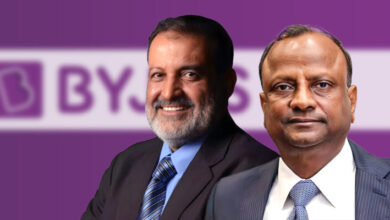India’s shocking low tax-to-GDP ratio and the required reform: Did GST do the required job? 4 points to note

World Bank defines India as a lower middle-income country as per its per capita income bracket, and despite all odds, the country has managed to create a name for itself in the global market, namely for being the third-largest Asian economy, a significant equity market contributor, the global trading hub for outsourcing activities, and quite recently, a significant home to the world’s third maximum unicorns. Quite explanatory in itself to call India in its primate development stage.
However, one very important prerequisite for sustainable development is a significant infrastructural contribution, along with more equitable distribution of income in the country. And to be completely fair, the country is lacking in both of these sects at this particular point-
First, because of the restricted fiscal space for the government to engage in the required infrastructural expenditure.
Second, lack of proper mechanisms to take the fair share from the rich and trickle it down significantly in the hands of the poor, for a more equitable distribution of income.
Now, the matter at hand for the former is the government’s privatization and monetisation spree, for they intend to generate income from the assets already created to invest in assets that require creation. As for the second, well, looks like we are just simply moving ahead with these wide income disparities since any probable action step in the regard doesn’t really look too nearby.
But what if I tell you, there’s one policy action that happens to kill these two birds with one stone? Well, tax administration. I’m guessing you’re both confused and intrigued, but it really is this simple, and well, the government knows it. It’s not like they don’t want to take action on it, it’s just that they are unable to.
Let me take you through the required discussion step by step.
Why an effective tax policy is key to both development and equitable distribution in India?
In a developing country, the primary objective of a tax policy is fairly simple- raise revenue in an equitable manner and with minimum unintended changes in relative prices and allocation of resources. The second part of this objective, i.e., minimum unintended changes in relative prices and resource allocation, is specifically important for a developing country from the perspective of international trade that takes effect through the comparative advantage and resource-endowment theory, and for effective market space for growth prospects.

Now, keeping these objectives in the head, a tax policy is said to stand on a tripod of three domains- architecture, engineering and administration.
Tax architecture specifies the objectives of tax reform and provides appropriate design to meet those objectives. The engineering aspect relates to the mechanics of applying those designs and maintaining the nature, and quality of the systems and institutions involved in tax collection. The management aspect determines the implementation strategy and action.
Oh wow, it looks like this big bulk of technical information is thrown at us, but to be honest, every tax policy, even India’s, stand on this very necessary tripod. Well, it’s a different thing all of these three pillars are shaky in themselves. What was the proverb about a building with weak roots, again?
India’s tax policy and its problems-
Every effective tax policy is framed to minimize the three associated costs- the cost of collection, the cost of compliance, and the cost to the economy in terms of distortions created. In economic terms, the third cost is called the dead-weight loss, and the optimality of the type of tax to be charged depends on the dead weight loss minimization.
Even though the economic theory has provided the advantages of differentiated taxes based on elasticities and types of taxes over the years, their application has been fairly difficult with respect to improper knowledge, the difference in incidence. Therefore, uniform taxation has taken priority both in developed countries and developing countries, even with effective tax administration systems in the former.
The best practice approach to tax policy and reforms would require the governments to broaden the base, lower the rate. Levy a simple and transparent tax system and avoid arbitrary tax differentiation across people and economic activities. The design is to be such that it inculcates fairness in its impact.
Now, a plain look at India’s tax policy and its comparison with the above statement would be enough to tell us why there are so many problems in the Indian tax policy. Let me point them for you-
First, the fragmented constitution in itself hinders India from levying a comprehensive tax. The assignment of the tax on incomes from agriculture to the States has resulted in the Union government levying taxes only on non-agricultural incomes. The states do not impose the agricultural income tax except the income from plantation crops. Not only that, even corporates making investments in the agricultural sector do not have to pay the tax.
This not only gives a wider scope for tax evasion and non-compliance but is also representative of why there is ineffectiveness in the tax policy- the multitude of the objectives pursued by the tax system.
As per India’s tax policy, besides raising revenue, the Indian tax system is designed to fulfil the objectives of incentivizing savings, promoting exports, achieving balanced regional development, promoting investments in infrastructure, expanding employment, promoting scientific research and development.
This long list of complexities is the roadblock in the Indian tax system’s path of comprehensiveness and continues to contribute to the system’s astonishingly low revenue productivity.
The second reason includes the long list of exemptions, concessions and deductions with inadequacy in the maintenance of these systems, ultimately allowing space for evasion, non-compliance and ineffectiveness.
Other reasons include tax abuse by multinational companies resulting in base shifting and profit shifting and the poor capacity of tax administration in including the information system to effectively administer and enforce taxes.
India’s tax-to-GDP ratio over the years and how every reform has failed to improve it-
As per a 2011 IMF study, the average tax-to-GDP ratio for lower-middle-income countries for the time period 1980-2009 was close to 18 per cent, while that for middle income countries at 22 per cent.
In comparison, however, India’s revenue ratio has been much lower, with the ratio hovering around 16.2 to 16.5 per cent in the five-year period post 2010, and has been on a decline since, with the ratio at 11 per cent in FY19, 9.9 per cent in FY 20, and due to a significant decline in the GDP itself, got to 10.2 per cent in FY21. These numbers are self-explanatory in stating their significance and how the Indian economy has been unable to grow at its full potential because of inefficiency in the revenue collection system and policy.
Also note, economic theory establishes an explicit link between tax-GDP ratio and per-capita GDP, both in PPP and nominal terms using elaborate empirical data stats, corroborating a direct relationship between the two. This means that as the per capita income of a country improves, it is only sensible (and ideal) that its tax-GDP ratio improves. In India’s case, however, the link has not held place. Even as the per capita income has improved thus far, the Tax-to-GDP ratio has remained stagnant, if not declined.
This is also shadowed in the static public spending of the country over the past few years, with the number hovering around 26-28 per cent, and the investments in physical and social infrastructure have been constrained by stagnant revenues, proliferating concessions, and large spillovers. A stagnant public spending for a developing country in itself is a disappointing feat.
GST- the biggest tax reform in Indian economic history-
In Indian economic history, the GST is the biggest tax reform. GST is a value-added tax that applies to the use of goods and services. Different indirect taxes, such as CST, VAT, service tax, etc., were levied prior to GST. All these taxes were clubbed under one GST head, as one nation with a unified tax system.

As government revenues increase in terms of increased tax compliance and reduced tax evasion, the spillover outcomes of GST are immense, enabling tighter control and encouraging more precise monitoring than the conventional tax system. Increased government tax collections will provide scope for increased public spending in numerous social and physical development programmes, providing additional scope for the generation of jobs.
Despite GST’s tremendous potential for a higher growth trajectory of the Indian economy, however, numerous companies, sectors and exporters are currently facing enormous problems because of the same. More than half of the surveys conducted by premiere institutions revealed that their post-GST adoption of company revenue has decreased, according to the report.
With respect to the overall accountability situation within the GST network, a majority of institutions, people, and communities feel that the system is less transparent.
The process for compensation and the availability of laws and regulations was less straightforward. In the global consumer/indirect tax reforms, VAT/GST was a major breakthrough. In India’s case, however, the numbers are self-explanatory to contradict the values attached with the augment of GST and the supposed reform it was supposed to bring in. Even though there is a multitude of reasons for this event, it cannot be denied that the eventual consequence has been the inefficiency of India’s tax policy to contribute as a significant revenue generator for India’s developmental prospects.
Edited by Sanjana Simlai.





